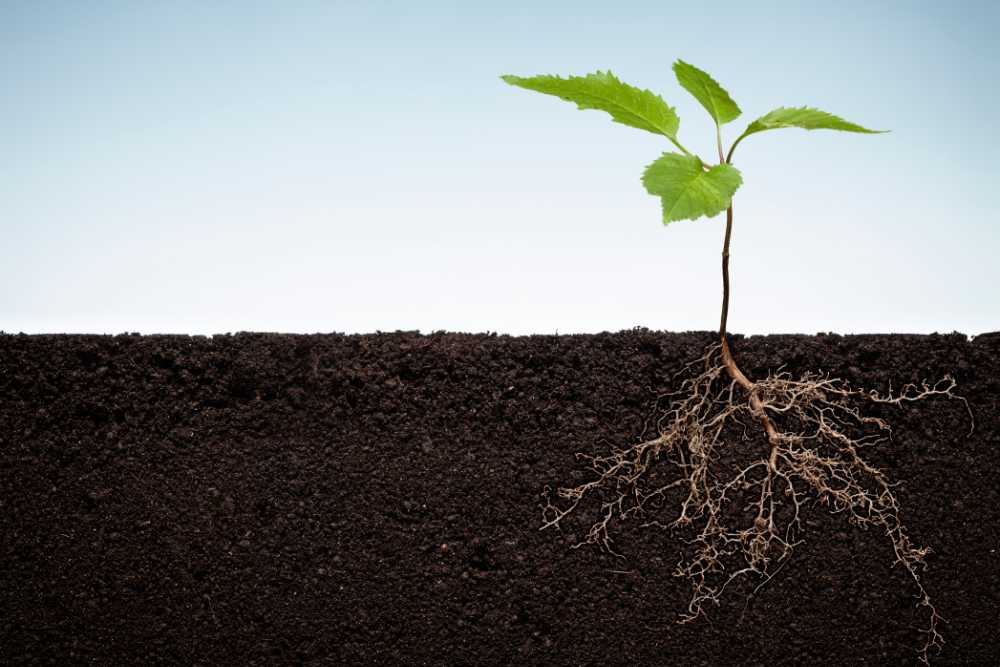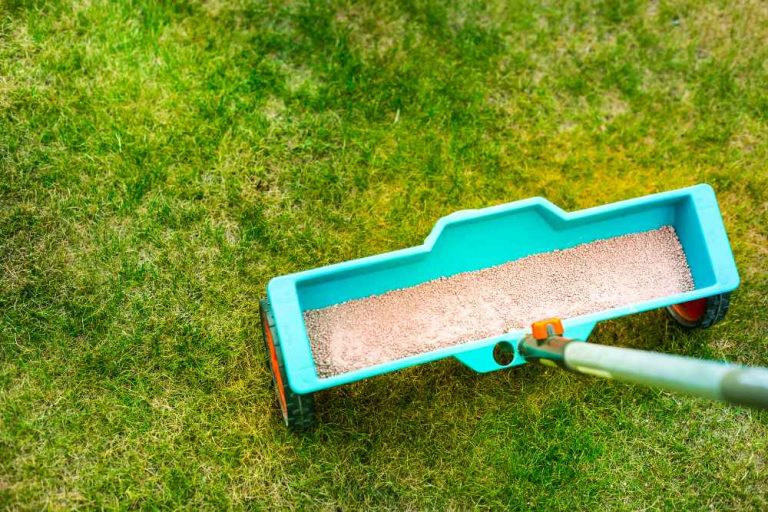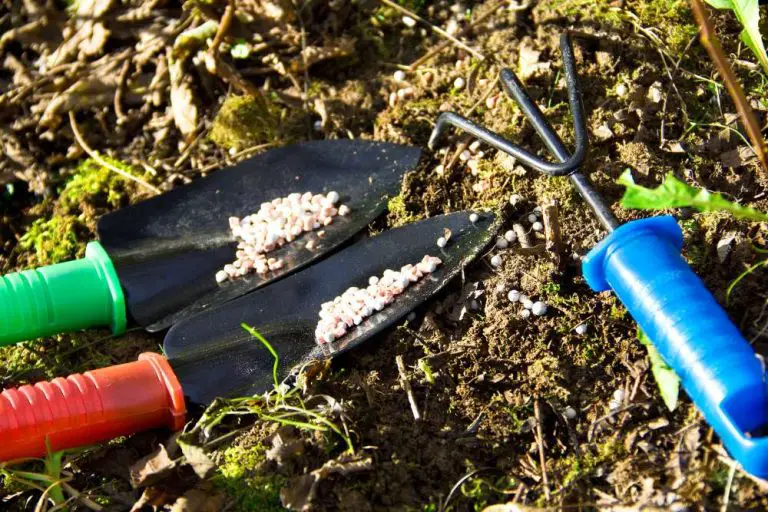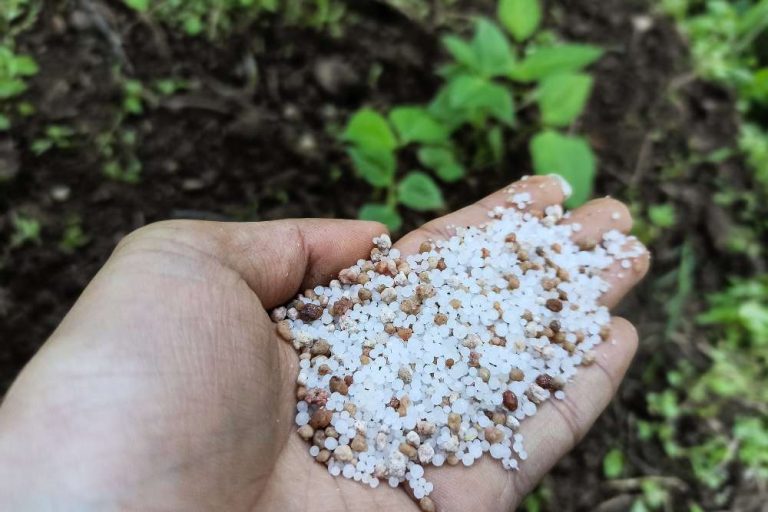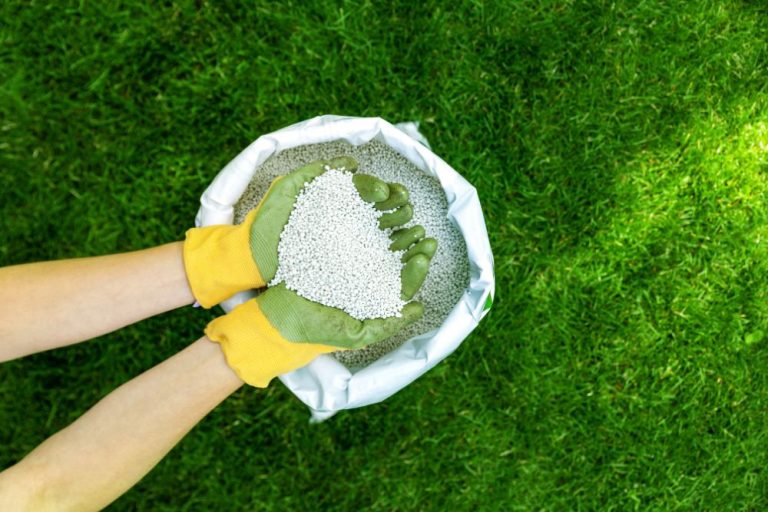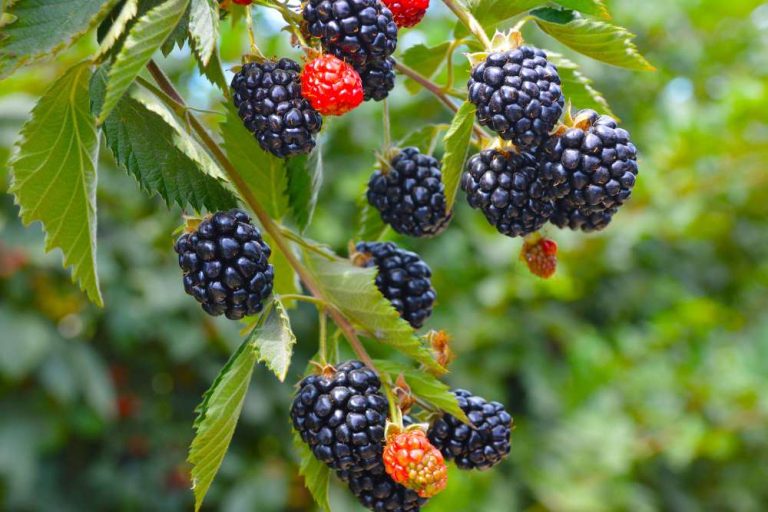9 Best Fertilizer for Root Growth – A Comprehensive Guide
Plants absorb nutrients mainly through their root systems, which can also manufacture and transport physiological activators. Because roots serve as the “receptors” via which a crop plant perceives environmental changes, their growth has a significant impact on shoot growth and crop yield. Plant growth and development are also regulated by the roots. The best fertilizer for root growth will be covered in this article.
The N-P-K Rule
The N-P-K ratio of most store-bought fertilizers will be printed on the bag. This ratio represents the percentages of nitrogen (N), phosphorous (P), and potassium (K) in the combination.
If you want a mixture that promotes root growth, make sure the first number is always much lower than the next two. 3-20-20, denotes three percent nitrogen, twenty percent phosphorous, and twenty percent potassium. Nitrogen favors green, leggy growth over flowering, fruiting, and strong, healthy root growth.
How Can You Encourage Root Growth?
The two minerals that are most critical for plant root development are phosphorus and potassium. Every fertilizer mixture that wants to either encourage the development of a thick, strong cluster of new roots or to fortify and stimulate existing systems must contain these two elements.
These fertilizer combinations are appropriate for the plant’s busy growing season, and as an added bonus, the presence of phosphorus will promote the growth of fruit and flowers, which will give your garden a beautifully colorful appearance.
What is the Role of P and K Nutrients?
The three principal nutrients for plants are nitrogen (N), phosphorus (P), and potassium (K).
The best nutrients for root growth are potassium and phosphorus, as was already mentioned. In plants, potassium plays a role in how nutrients and water are transported. As a result, it encourages the development of plant root systems. Instead of affecting root function, a deficiency in potassium will prevent roots from developing normally, resulting in roots that are smaller than usual and cover less area than usual.
In the meantime, phosphorus is necessary for the conversion of energy into various forms and the growth of new tissue. Root growth is stimulated as a result of its operations. For the purpose of finding nutrients, water, and sunlight, the plant needs phosphorus to help its roots grow deeply into the soil.
Phosphorus is used by the plant to develop roots that reach deep into the soil in search of nutrients, water, and air. The longer a plant’s roots, the simpler it is for it to find the supplies it needs to survive.
Organic Homemade Fertilizer
Natural fertilizers have a lot of benefits, but some of the most notable ones are that they don’t affect the soil’s microbial population, your plants are less likely to die if you use too much, they’re more affordable, etc.
1. Wood ashes
Medra ashes are an excellent fertilizer for stimulating root growth. This is due to its high phosphorus content, which is the primary nutrient for this purpose. It’s simple to make; just look for wood ashes and dilute them in water, and you’ll have a ready-to-use fertilizer.
2. Coffee-based Stimulator
This is another fertilizer to stimulate root growth. Pour half a liter of water into a jug and add a handful of coffee beans to it. Boil the water for a few minutes, then set aside to cool. Once the mixture has cooled, take the plants and soak them in it for a few minutes before transplanting them.
3. Lentil-Based Stimulant
Find around 100 lentil grains, and then sprout them in a dish of water as a lentil-based stimulant. After they have germinated, blend them. Mix with 2 liters of water and a few drops of lemon after it has been mixed. If feasible, take a pH reading; it should be around 5.5; if it is higher, add extra lemon. Once the mixture is homogeneous, filter it and you will have a ready-to-use mixture.
4. Bone meal
This fertilizer also contains a lot of phosphorus. To make it, look for bones and cook them over a fire for several hours. Once they have burned sufficiently, you will notice that you can easily ground them into powder, or as we call it here, bone meal. You can use that powder as a fertilizer.
Synthetic Phosphorus Fertilizers
Synthetic phosphorus fertilizers supply the same vital nutrients for healthy root development as organic sources; however, they are manufactured or chemically generated. Synthetic fertilizers have the advantage of providing phosphorus to growing plants considerably faster than organic sources.
Because of this, they are suitable for phosphorus-deficient plants. Furthermore, controlled-release fertilizers are easy to use and deliver sustained phosphorus diffusion into the soil for three to eight months, eliminating the need for recurrent fertilizer applications.
Commercial Best Fertilizer For Root Growth
1. Dr. Earth Organic & Natural Root Zone® Premium Starter Fertilizer 2-4-2
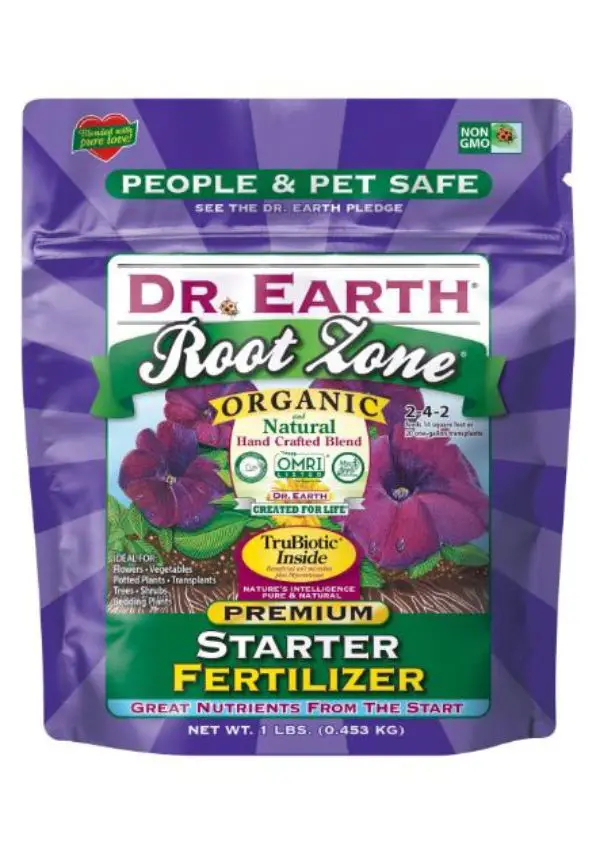
TruBiotic® beneficial soil microorganisms and mycorrhizae are included. TruBiotic®, which ensures that organic nutrients are completely broken down and then released in the soil for plant roots to absorb when they are needed, supports drought tolerance, enhanced nutrient availability, and improved plant performance.
Made by hand using feed-grade materials; enriched with natural nutrients derived from fish, fish bones, land plants, ocean plants, and earth-mined minerals. This well-balanced mixture of nutrients promotes the growth of incredibly rich, healthy soil, which is perfect for raising the healthiest plants. The healthiest flowers, trees, and vegetables may bloom in your yard and house thanks to healthy soils.
Made in the USA sustainably by a team of accomplished environmentalists driven to make a difference in the world. Organic Transparency: CCOF (California Certified Organic Farmers), OIM (Organic Input Materials), OMRI (Organic Material Review Institute), and NOP (National Organic Program).
Root Zone® fertilizer is designed to feed all transplants, vegetable garden plants, both summer and winter plants, in containers, or in natural soil found in your yard. It works best when used in the garden at home, when transplanting anything into a new container, or when planting seeds. There are no artificial chemicals or GMO-infested chicken excrement.
2. Down to Earth Root Growth
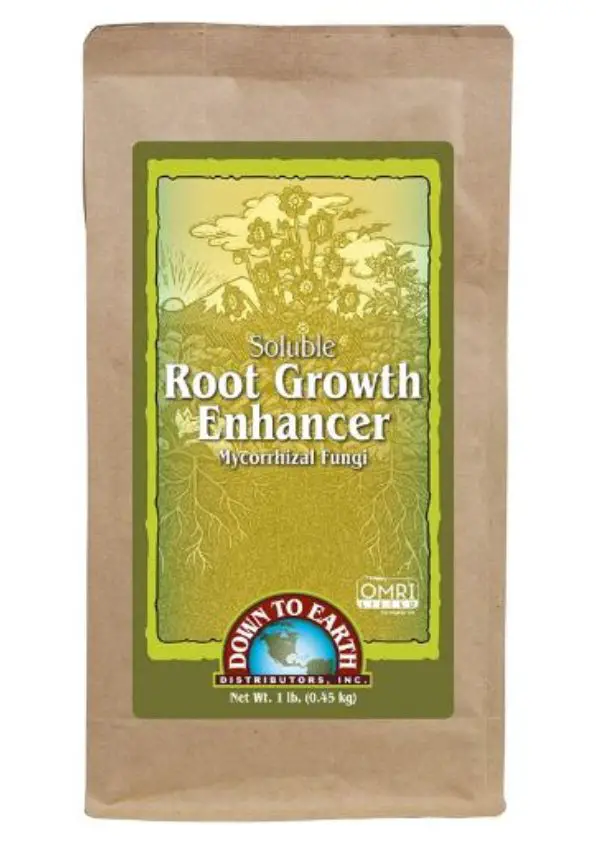
Down To Earth’s Root Growth Enhancer is a superb all-purpose blend of Endomycorrhizal and Ectomycorrhizal Fungi, as well as humic acids, that benefits a wide range of plants, trees, and shrubs. These microscopic soil organisms are essential for building extensive root systems, enhancing nutrient cycling and soil structure, and guarding against a variety of plant stresses such as drought and weather extremes.
This simple, water-soluble compound can help more robust plants and trees establish roots significantly faster. When transplanting, DTE Soluble Root Growth Enhancer can be given directly to seeds, roots, and cuttings or watered into porous media in gardens, seed beds, or propagation trays. This product should be stored between 40 and 85 degrees Fahrenheit.
Temperatures above 140 degrees F should be avoided. Keep out of the reach of youngsters and pets. Do not consume or breathe in. Avoid coming into contact with your eyes or your skin.
3. Bonide 412 Root N’ Grow Stimulator
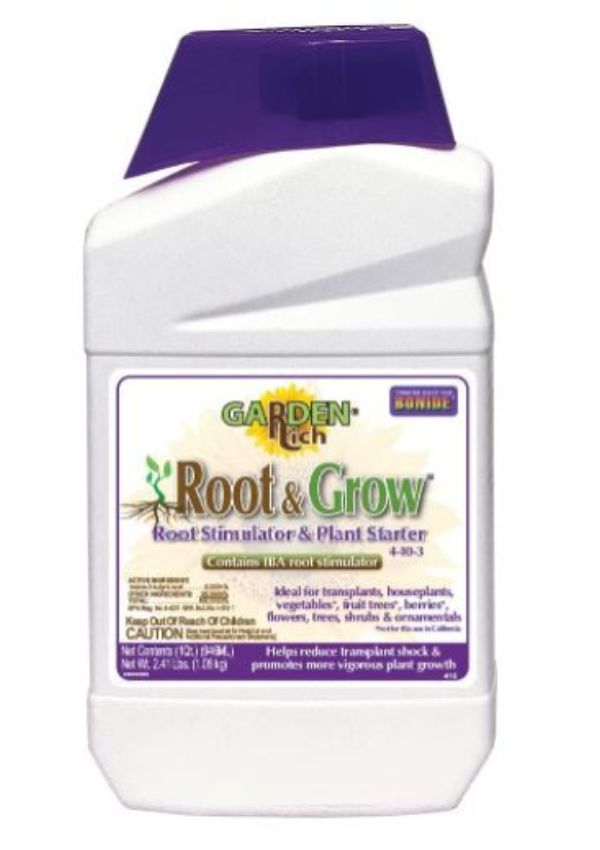
Ideal for transplants, houseplants, veggies, fruit trees, berries, trees, flowers, shrubs, and ornamentals. When sowing or transplanting, use Root and Grow to encourage early root emergence and greater root growth, as well as to lessen transplant shock and encourage more vigorous plant growth.
Indole-3-butyric acid, or IBA, is the active ingredient in Root and Grow. IBA is a plant hormone that promotes the production of roots in plant tissue culture. Stimulates early and vigorous root development. Reduces the effects of transplant shock.
Greener, more vigorous plants are promoted. 4-10-3 fertilizer includes 4% nitrogen, 10% phosphate, and 3% potash in a bag. Fertilizer that promotes green, healthy plants by stimulating root growth. The product rapidly dissolves in water, and the diluted mixture should be poured straight over the soil and roots. Read the label carefully and follow the instructions.
4. Mykos Xtreme Gardening
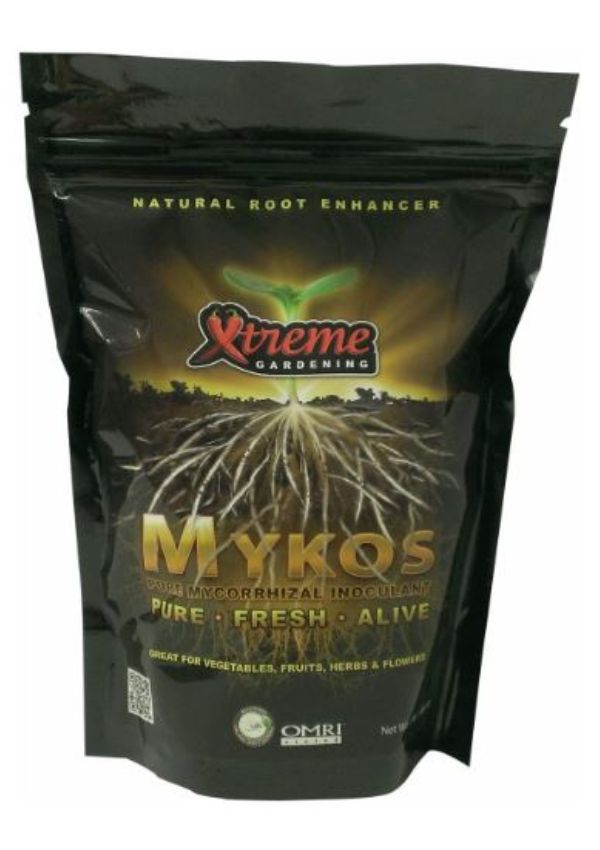
A fast-growing, helpful fungus called YKOS works in symbiosis with plant roots to boost nutrient and water intake. MYKOS is required for nutrient breakdown, cycling, and retention, as well as providing a first line of defense against environmental stressors, infections, and illnesses.MYKOS, a single species of Rhizophagus intraradices Endo-mycorrhizal Fungi, eliminates all root competition.
MYKOS will continue to evolve with your plants, becoming an extension of the roots and delivering improved efficiency and sustainability. In 95% of common plants, MYKOS works quickly and establishes solid roots.
Plants have the chance to produce more agricultural yields and secondary metabolites when their root systems are bigger and healthier. MYKOS reduces transplant shock in new plantings by encouraging new root development. MYKOS produces hyphae, which enhance root mass and allow for better nutrition and moisture absorption.
The fungal network is capable of transporting nutrients over long distances and delivering them straight into root cells. Plants provide energy to MYKOS in the form of carbohydrates generated during photosynthesis.
Individual plants can form mycorrhizal networks with other plants, sharing nutrients, carbohydrates, and water while also attracting more soil bacteria. MYKOS shields your plants from drought and heat stress.
As well as preventing hazardous germs from getting in touch with the roots. MYKOS improves soil structure in both clay and sandy soils. Additionally, MYKOS aids in the breakdown of organic molecules and their transformation into plant nourishment.
5. Garden Safe Take Root Rooting Hormone

Planting fresh plants from cuttings Hormone Supplement, It’s as simple as cutting, dipping, and planting. You can save money by growing fresh plants from cuttings with Garden Safe Take Root Rooting Hormone, 2 oz. Rooting hormone encourages the growth of new plants from cuttings.
Compatible with the most common greenhouse, garden, and home kinds. Helps a variety of plants, including woody ornamentals, roses, poinsettias, geraniums, philodendrons, coleus, and African violets, grow from cuttings. Apply to the cut ends by wetting the plant cutting, mixing the powder into the cut end, rinsing off any extra rooting hormone, and planting.
The active ingredient is Indole-3-butyric acid, which resembles the rooting hormone found in plants in their natural state. Dangers to Humans and Domestic Animals. Water, food, and feed should not be contaminated during storage or disposal.
- 20+ Chic Boho Bedroom Ideas for a Cozy and Stylish Retreat - June 20, 2024
- 12+ Modern Boho Living Room Ideas to Create a Unique Oasis - June 10, 2024
- 10 Stunning Canopy Bed Ideas for a Dreamy Escape - May 16, 2024

